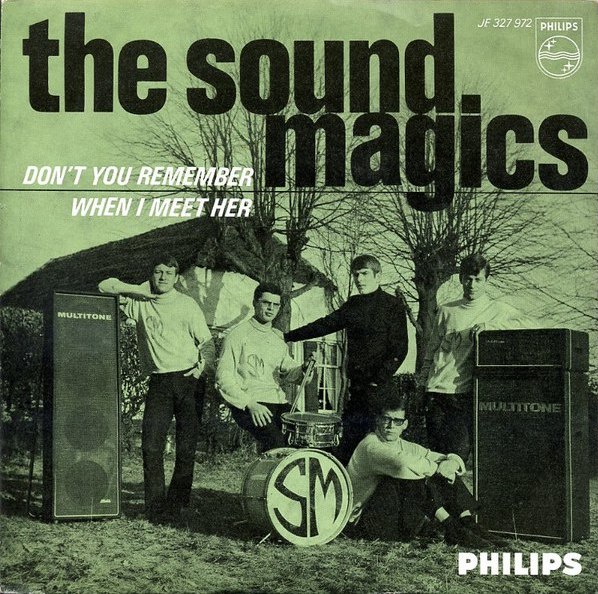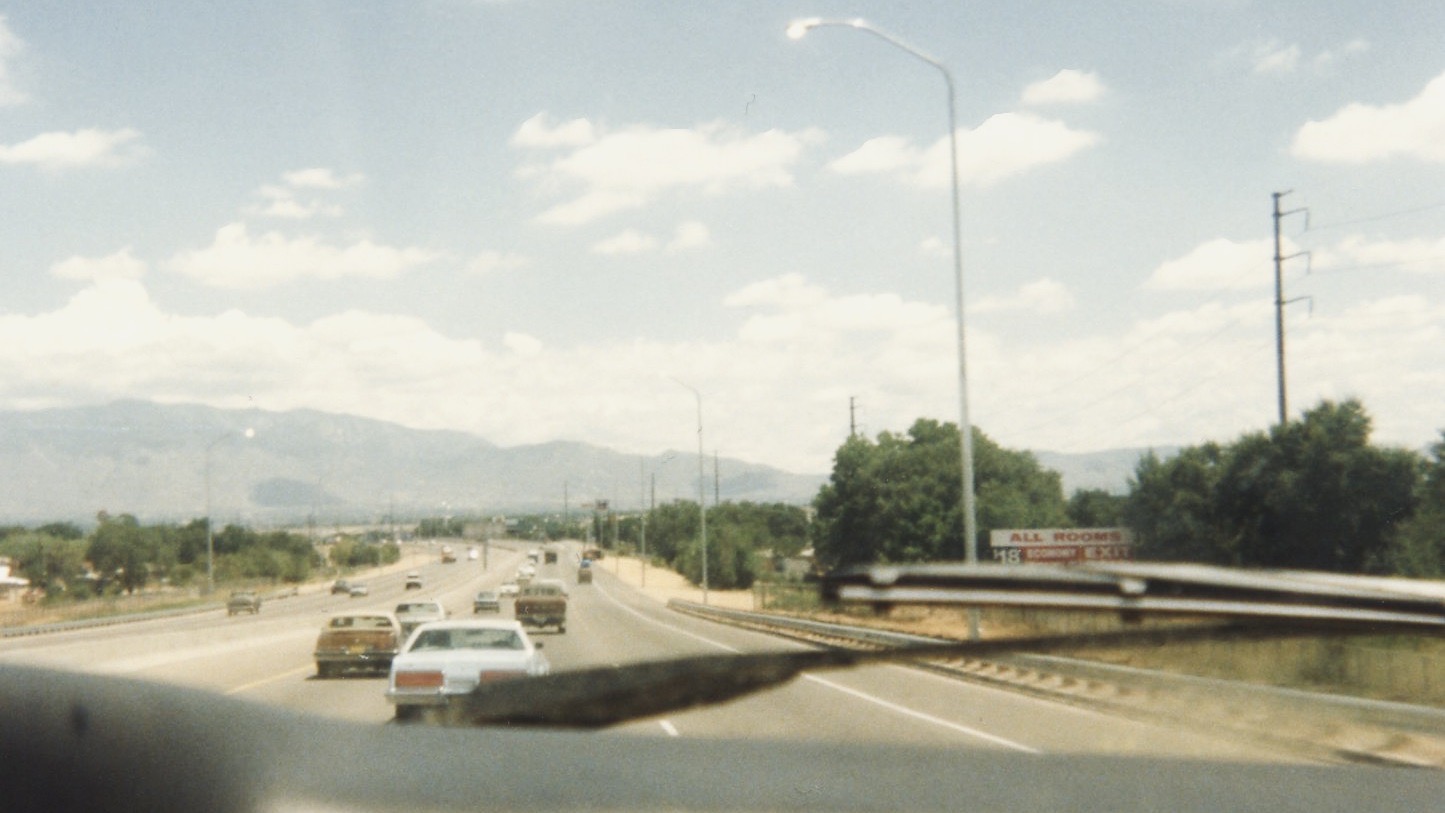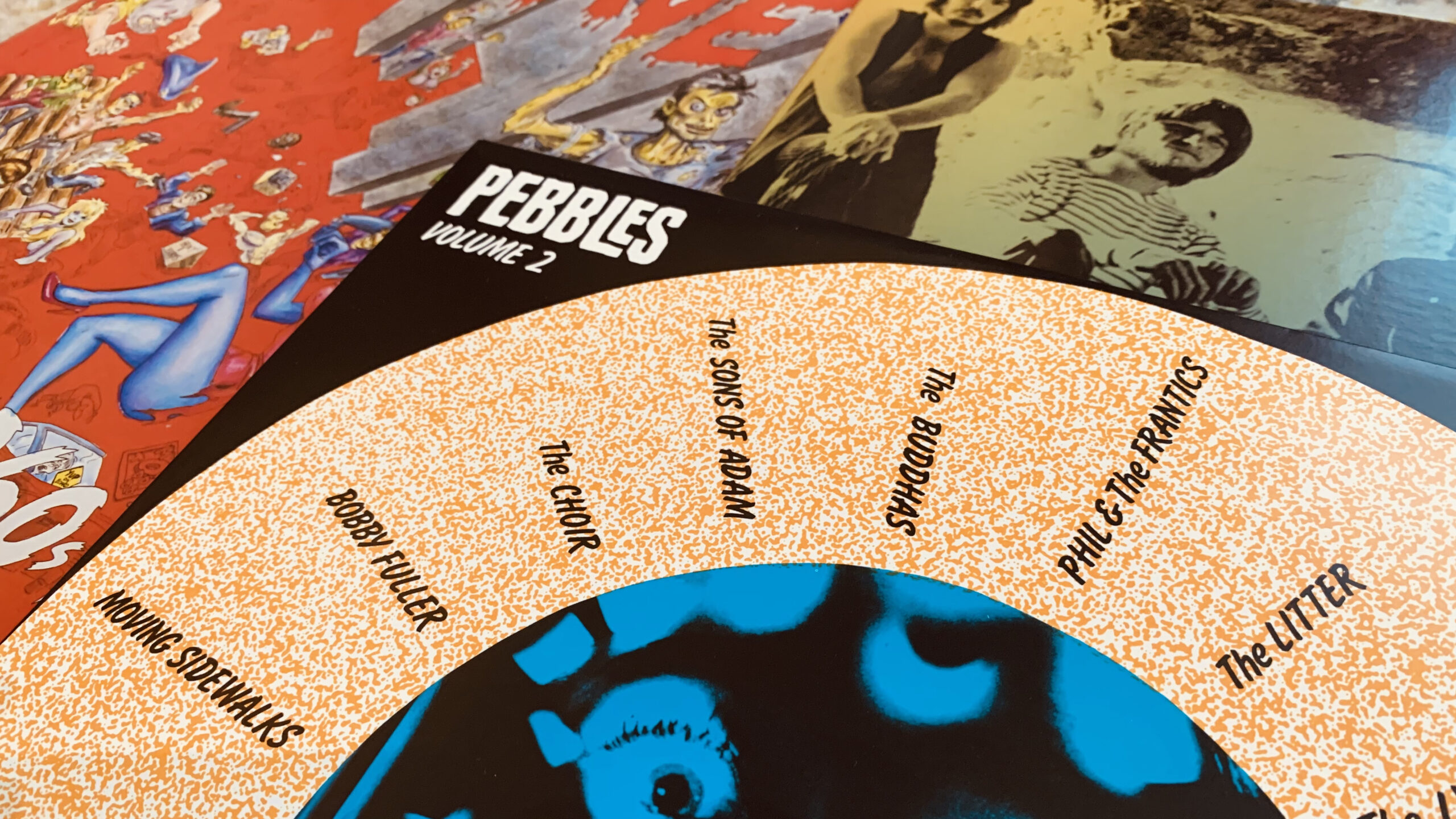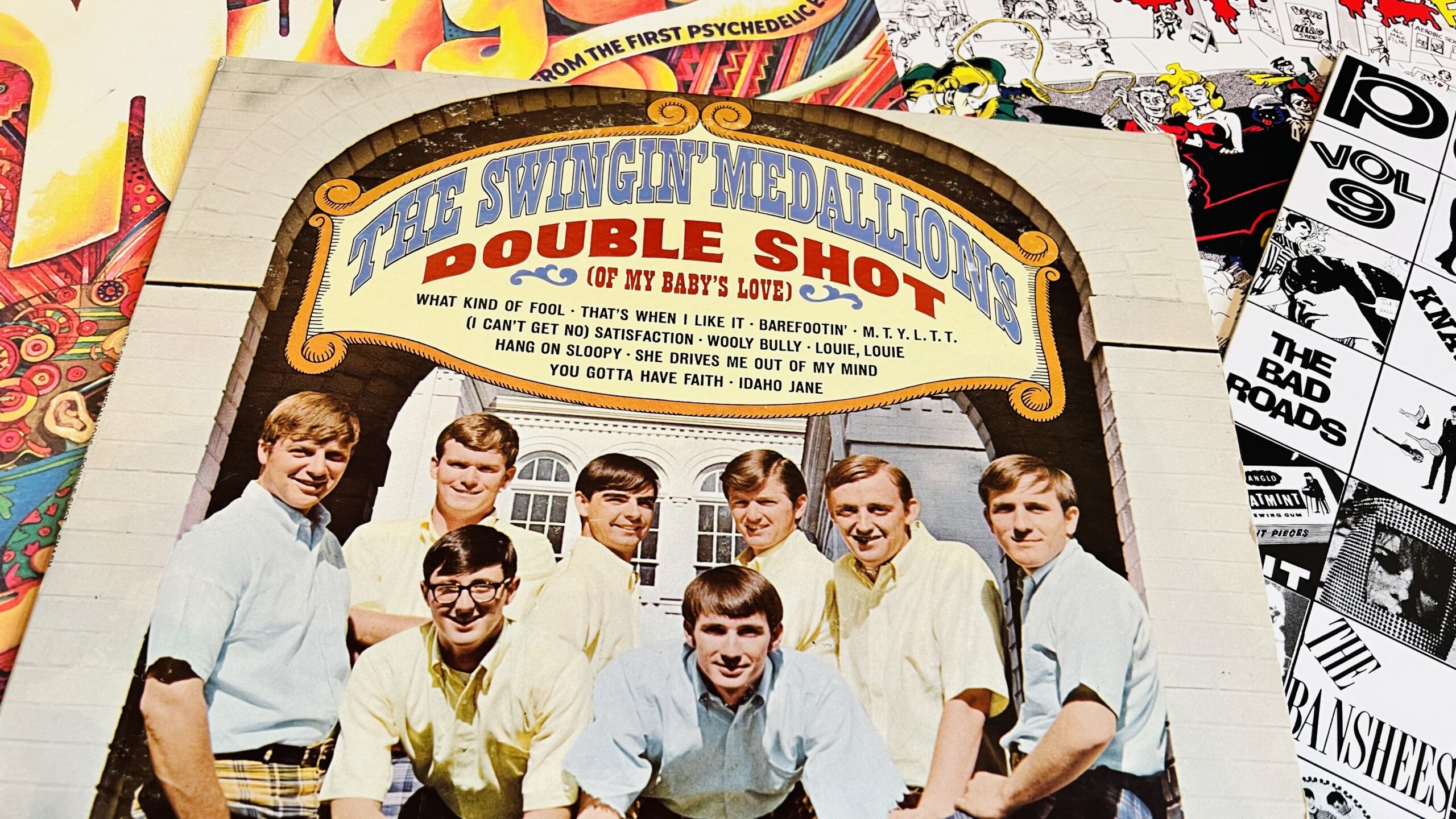
Whenever I’m prompted to think of favorite record sleeves, a few standbys definitely come to mind: Daydream Nation, Mingus Ah Um, Unknown Pleasures. Each of these are iconic images, rendered by legitimate artists, that perfectly capture the mood of the music contained within. Of course, there are other paths to great cover art: perfectly-timed photography (London Calling); simple-but-elegant design (“The White Album”); both of those things (virtually any album released by the Blue Note label); or even unintentional hilarity (Satan is Real).
For the past decade or so, I’ve been particularly enamored with a real obscurity. I first spotted it in the booklet that accompanies Rhino’s 2001 box set, Nuggets II: Original Artyfacts From the British Empire and Beyond. In the image, a group of five men in their late-teens or early-twenties stand/sit around a partial drum set (just the bass drum and snare). The only other musical equipment in the photo are a pair of guitar/bass amplifiers, emblazoned with the name “MULTITONE.”
On first glance, this could have been any one of the literal thousands of garage bands on both sides of the Atlantic that formed in the wake of the British Invasion. But there’s more to this image than a standard mid-sixties era rock group photograph. First, where are the guitars? Where is the rest of the drum kit? Behind the young men in the foreground, a small cottage with a thatched roof can be seen, in front of which stands a pair of barren trees. The entire autumnal scene is washed out in a green tint, reminiscent of the color saturation utilized on many classic Blue Note sleeves. Four of the five band members wear identical white turtlenecks, each adorned with the same homemade “SM” logo that appears on the bass drum at the center of the frame.
That “SM” stood for The Sound Magics, a group that formed in the small Dutch town of Doesburg, Gelderland in 1963. While they weren’t among the major players on the so-called “Nederbeat” scene, the quintet released two of their three singles on the British Philips label, which also issued albums from the legendary likes of Caetano Veloso, Jorge Ben, Scott Walker, and Nina Simone. According to the group’s profile on RateYourMusic, fourteen different members would filter in and out of the band over the course of its four-year existence (including two who also played in the Dutch band Moan, alongside the legendarily hedonistic Herman Brood).
Information on The Sound Magics is relatively scare online, and what is there is virtually all in Dutch. Ultimately, that leaves the band’s brief catalog to speak largely for itself. And standing at the center of that six-song discography is the green-tinted 1965 single, featuring the A-side, “Don’t You Remember.”
A moody, minor-key track, “Don’t You Remember” conveys an affection for both The Beatles and The Kinks, but one can also detect a clear Zombies influence – particularly in the vocal harmonies that add a baroque-like element. In contrast to the downcast mood – which is further emphasized by the forlorn lyrical content – the group’s guitars find those MULTITONE amps providing a trebly, almost “glassy” counterpoint. This is particularly effective in the ringing, upstroke chords that mark the song’s verses.
While its construction is simple, “Don’t You Remember” ultimately communicates an emotional complexity that few tracks of its ilk express. Garage rock recordings of the sixties tend to exist along the ends of a black and white spectrum. However, this single from an all-but-forgotten group eschews that simple dichotomy for something far more alluring; something that seems well-represented by its equally intriguing exterior.




